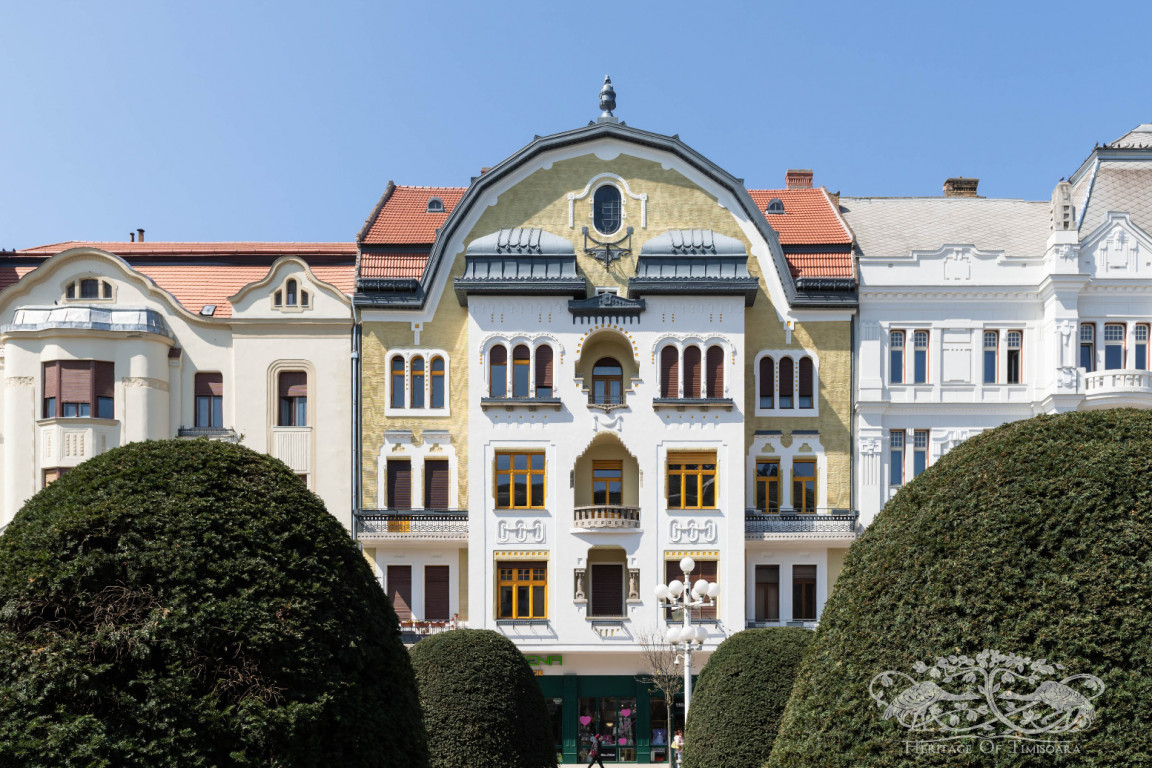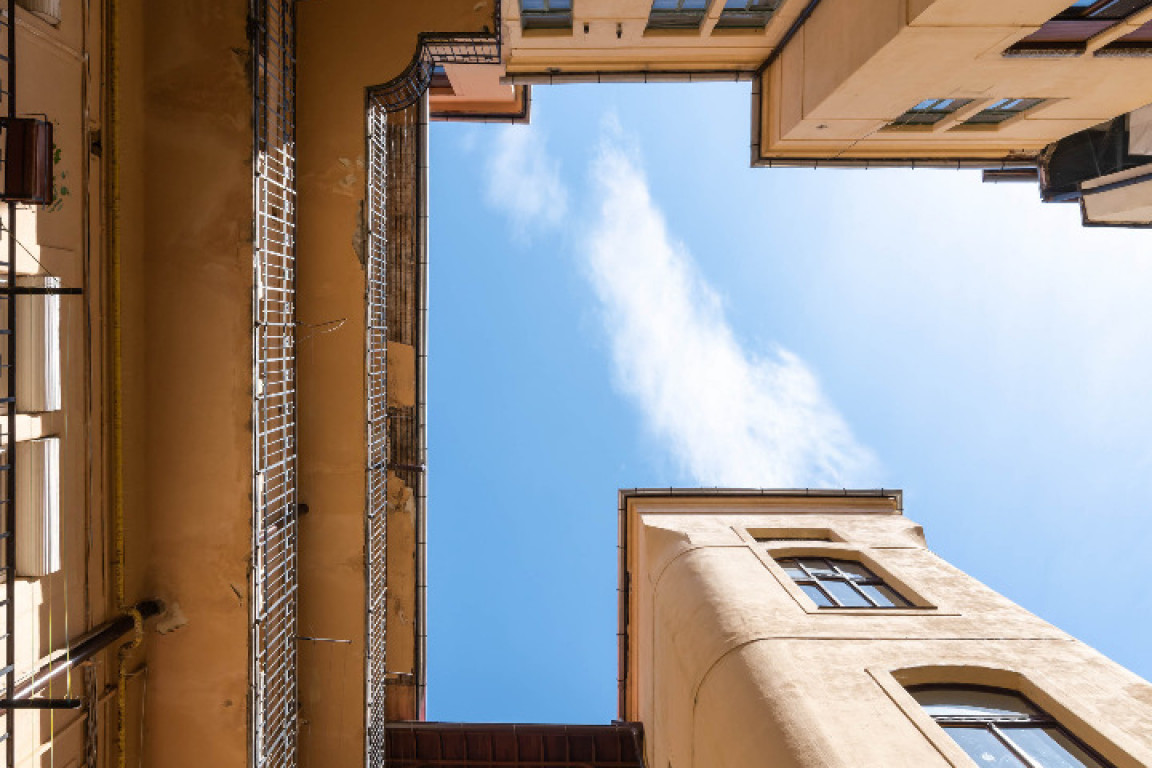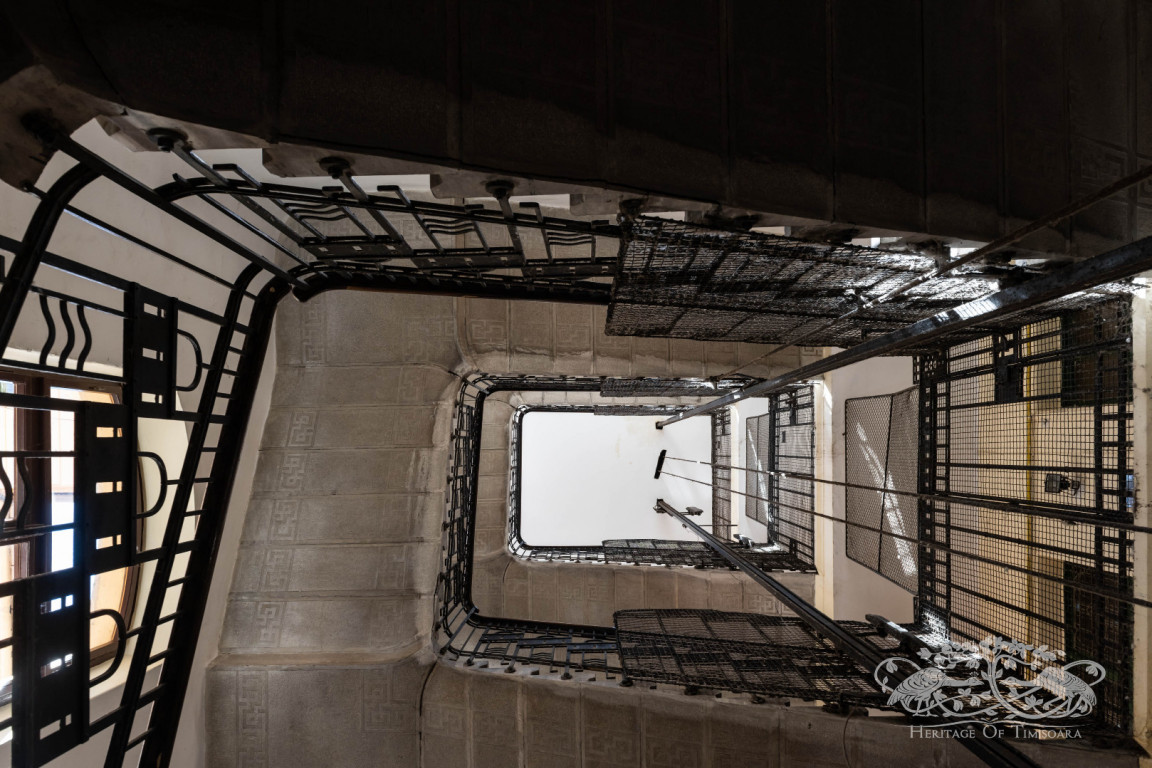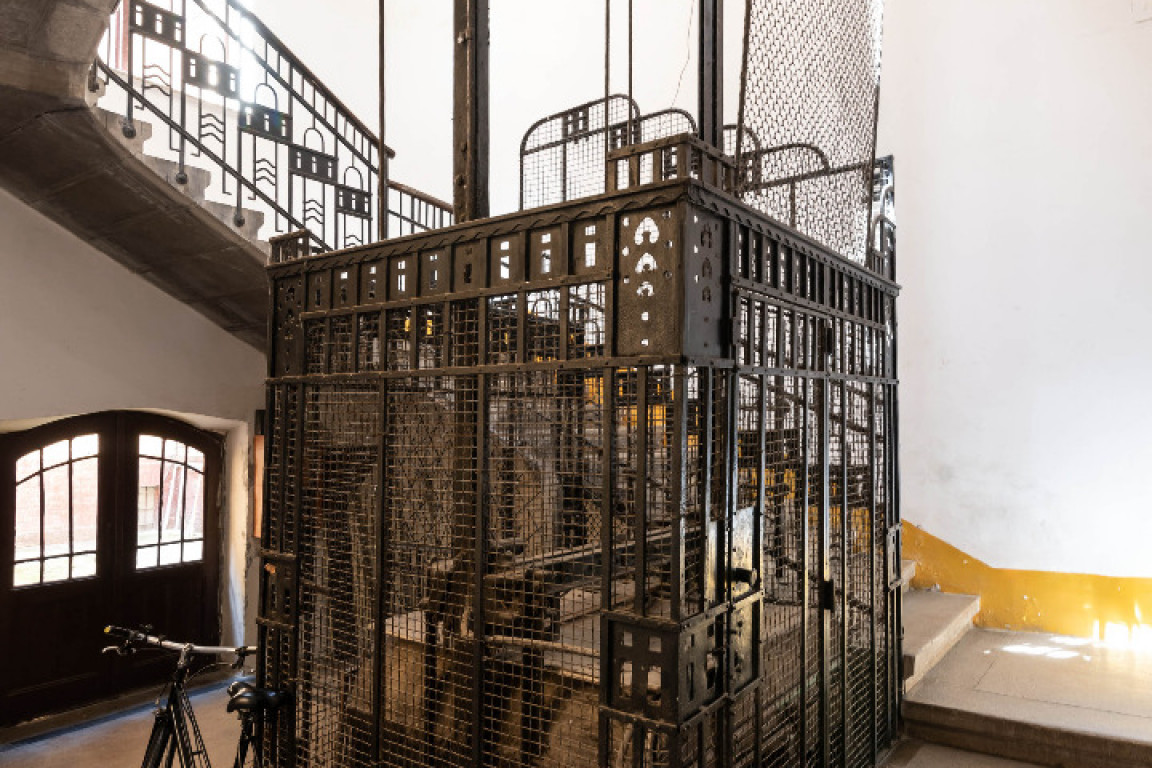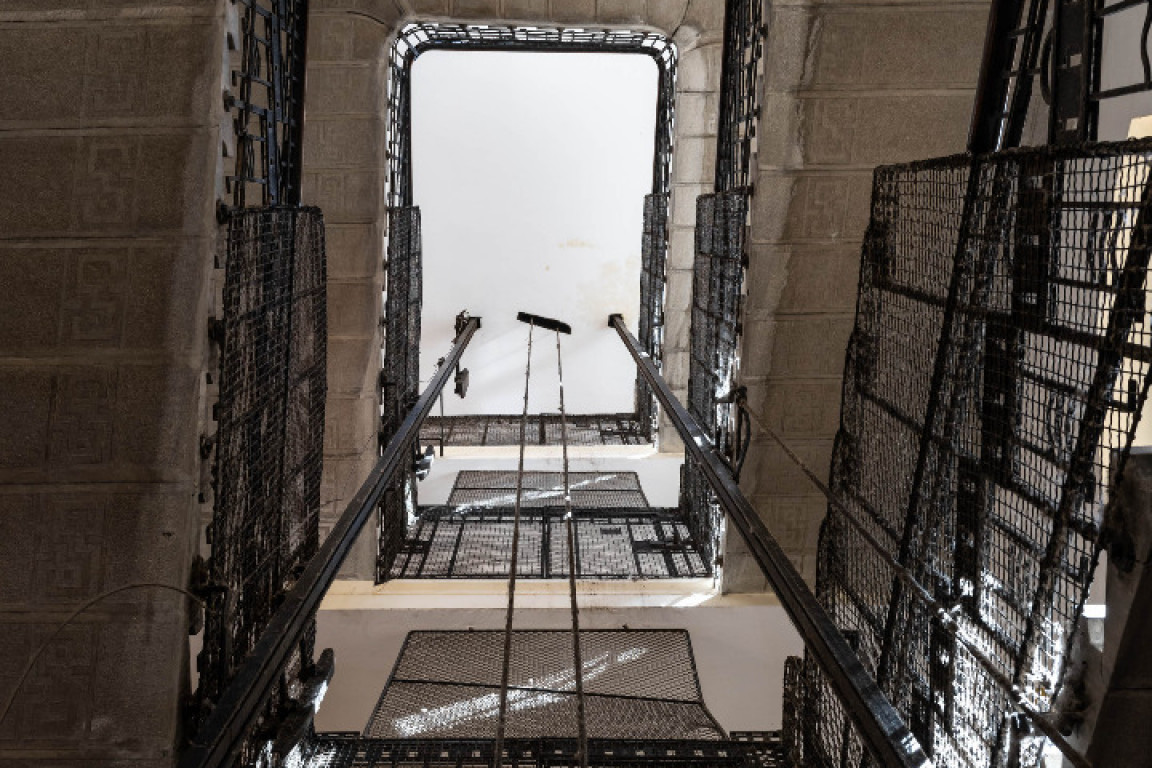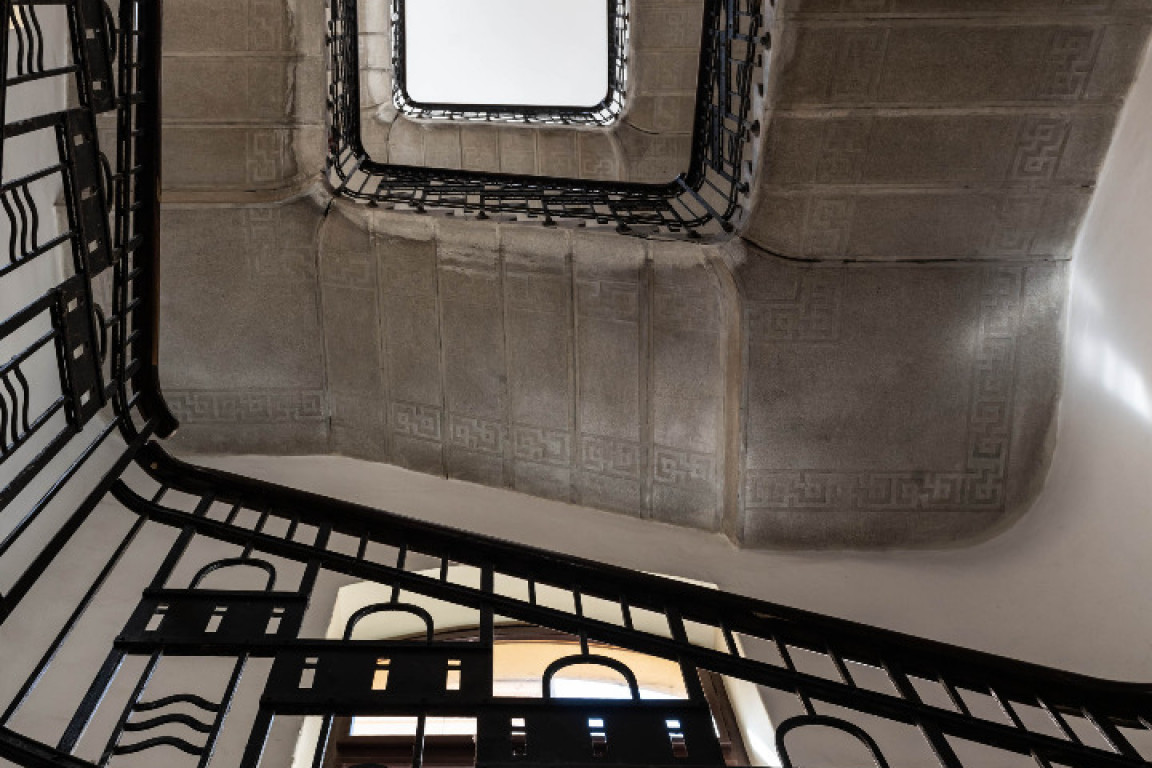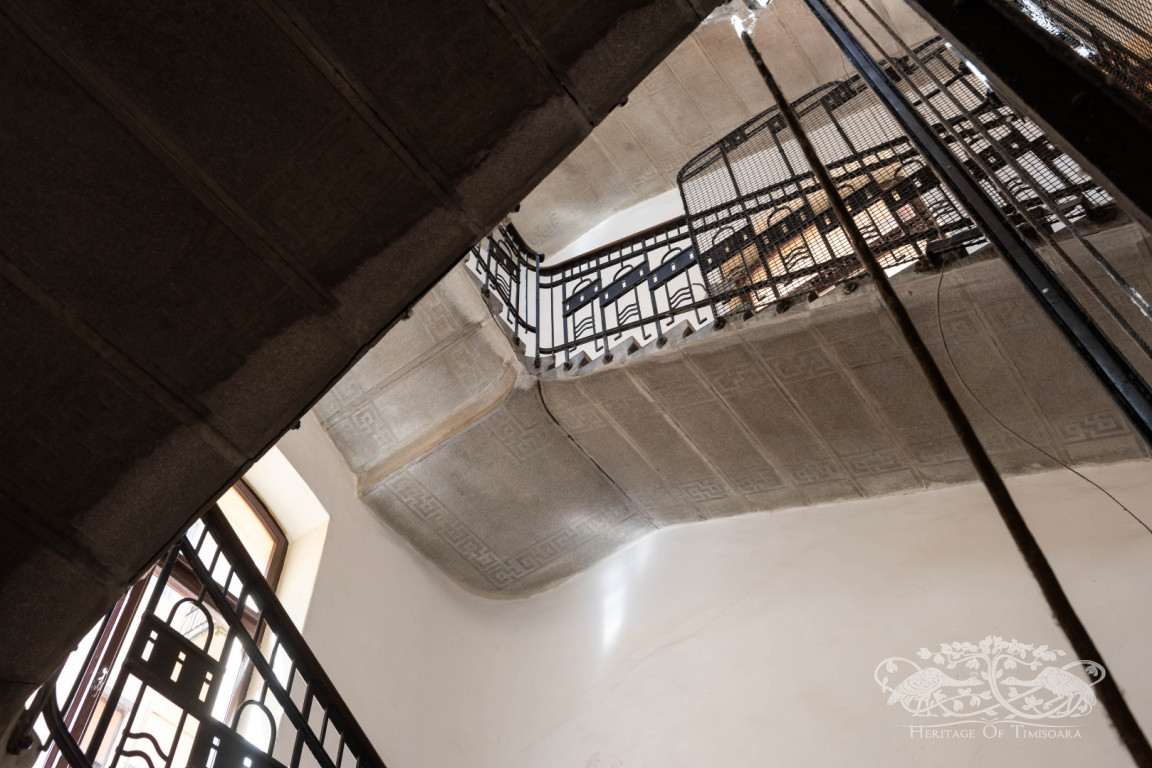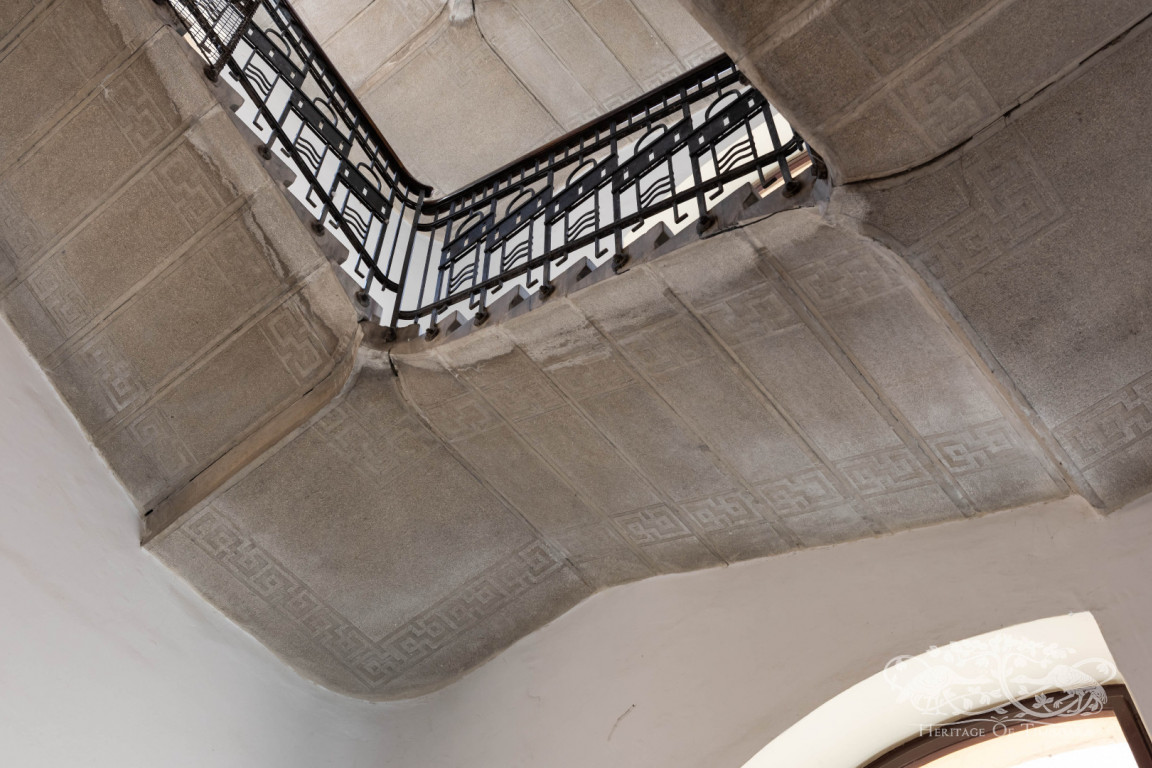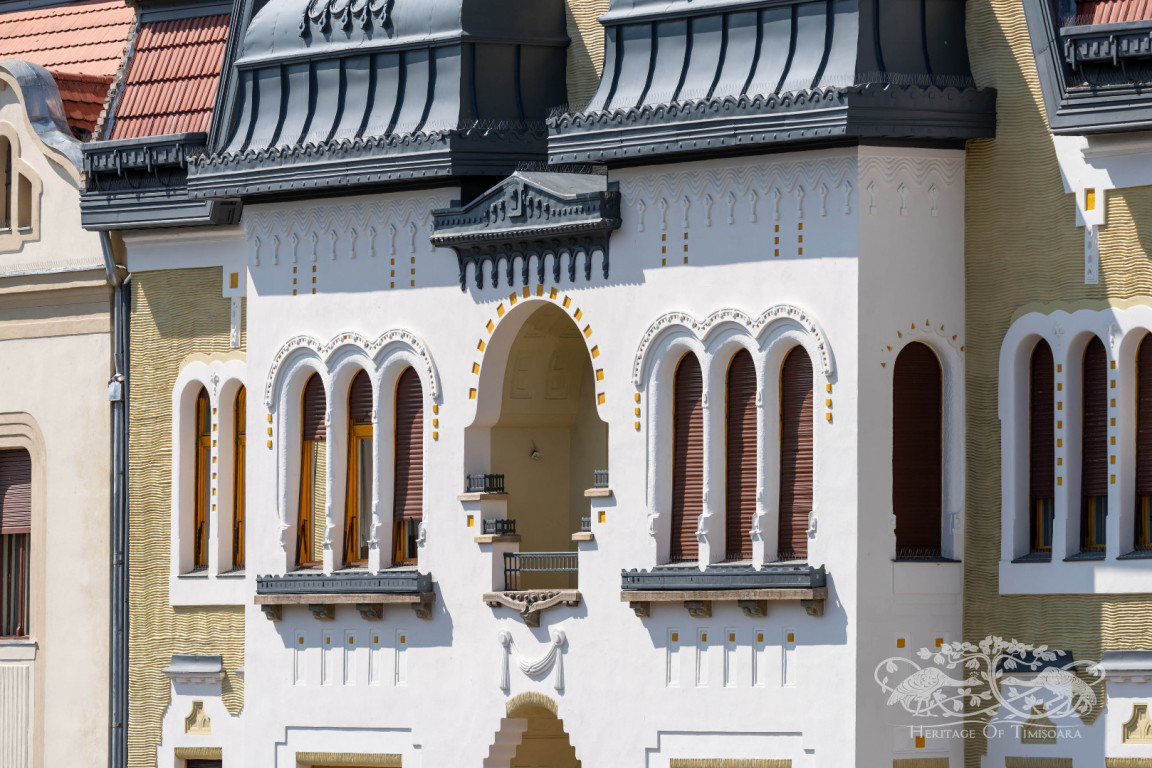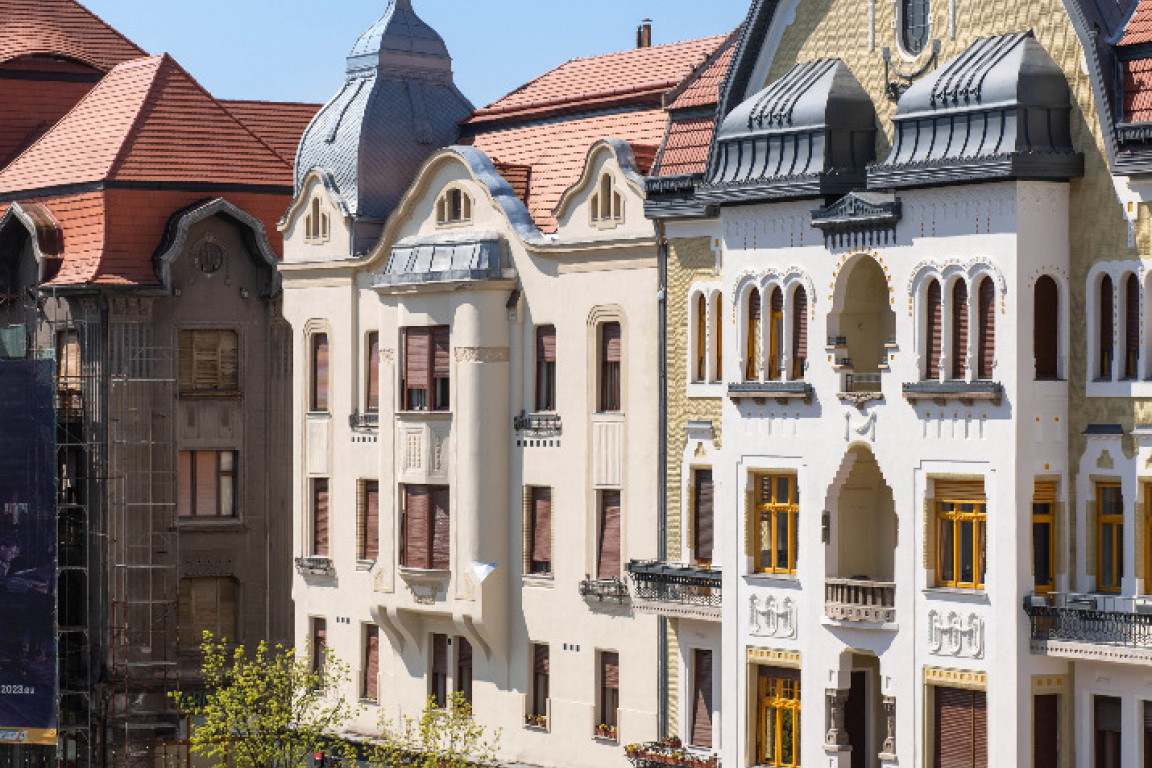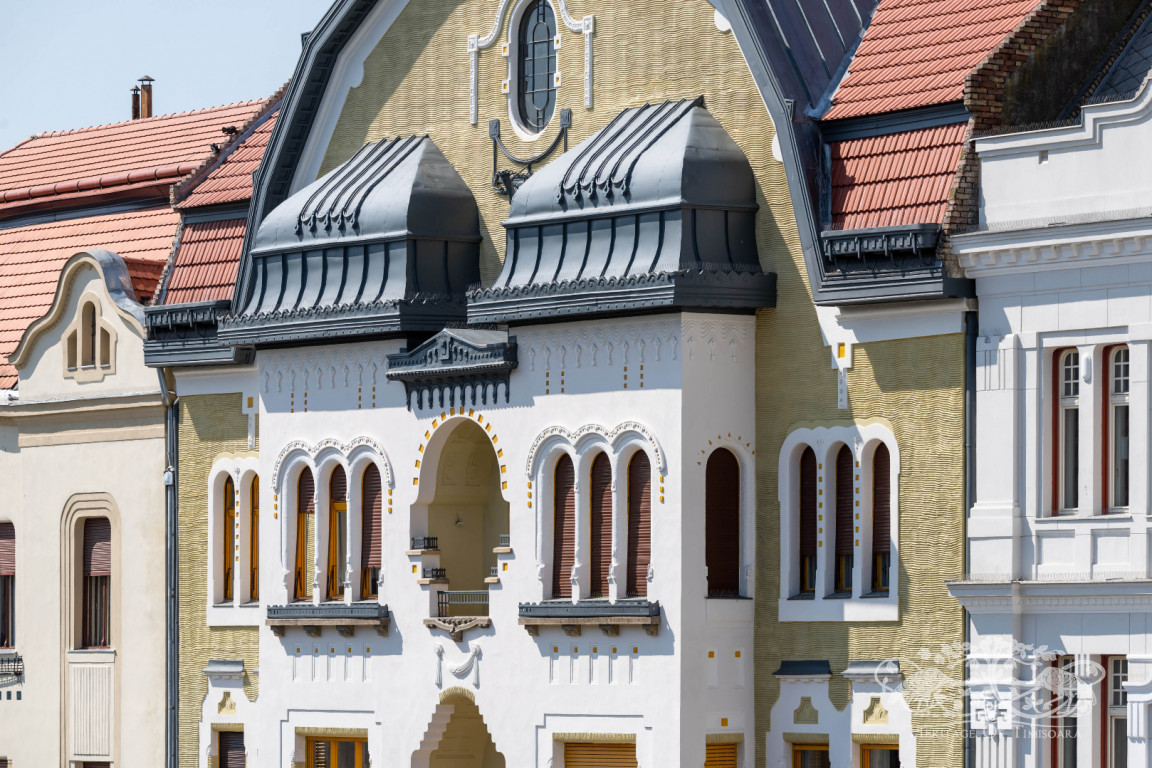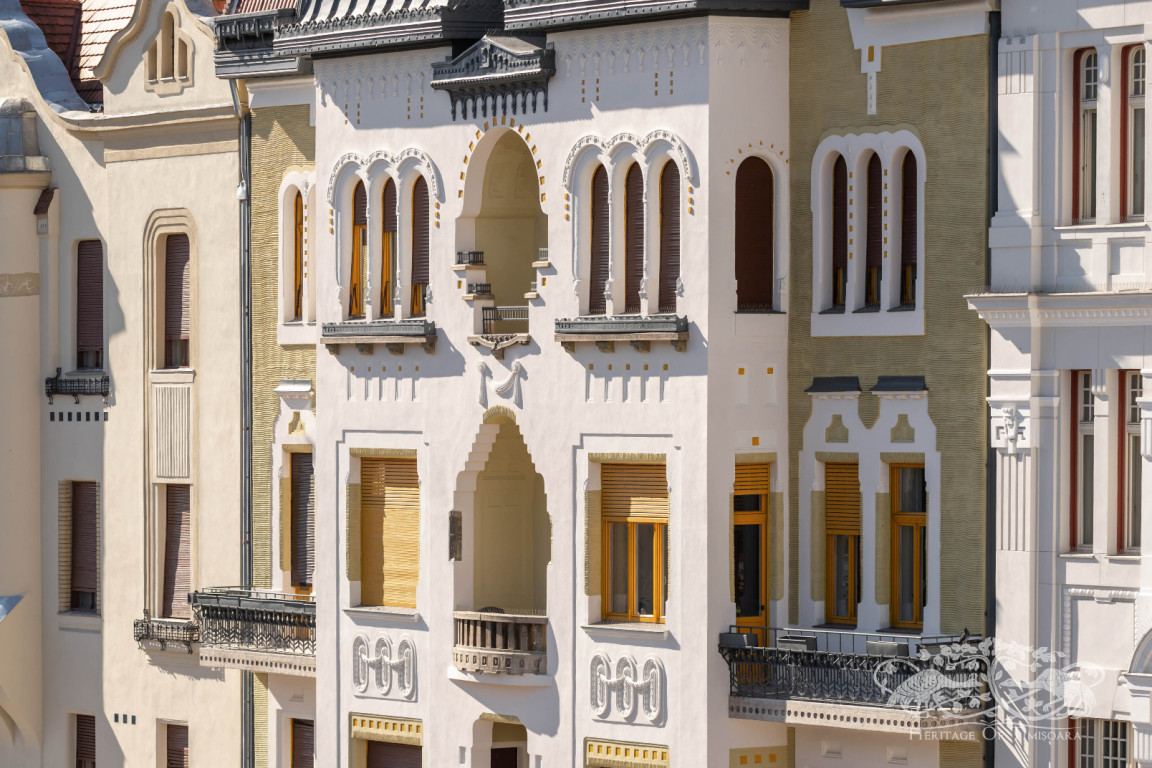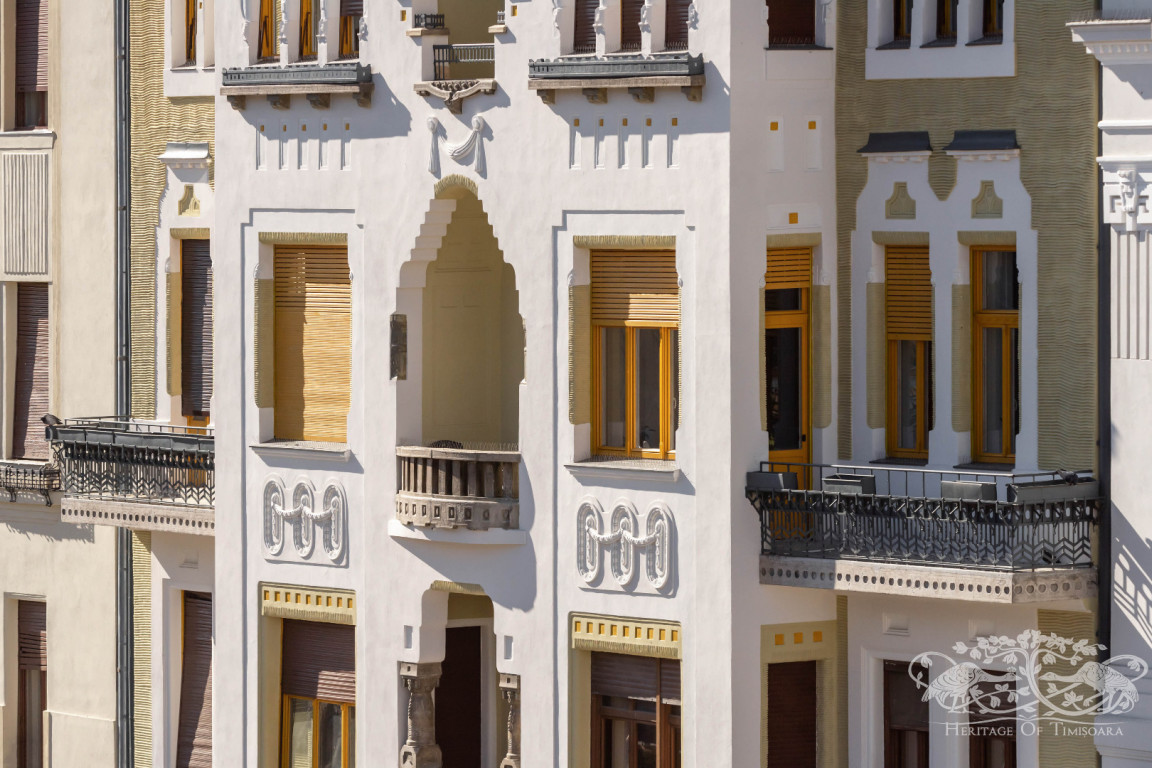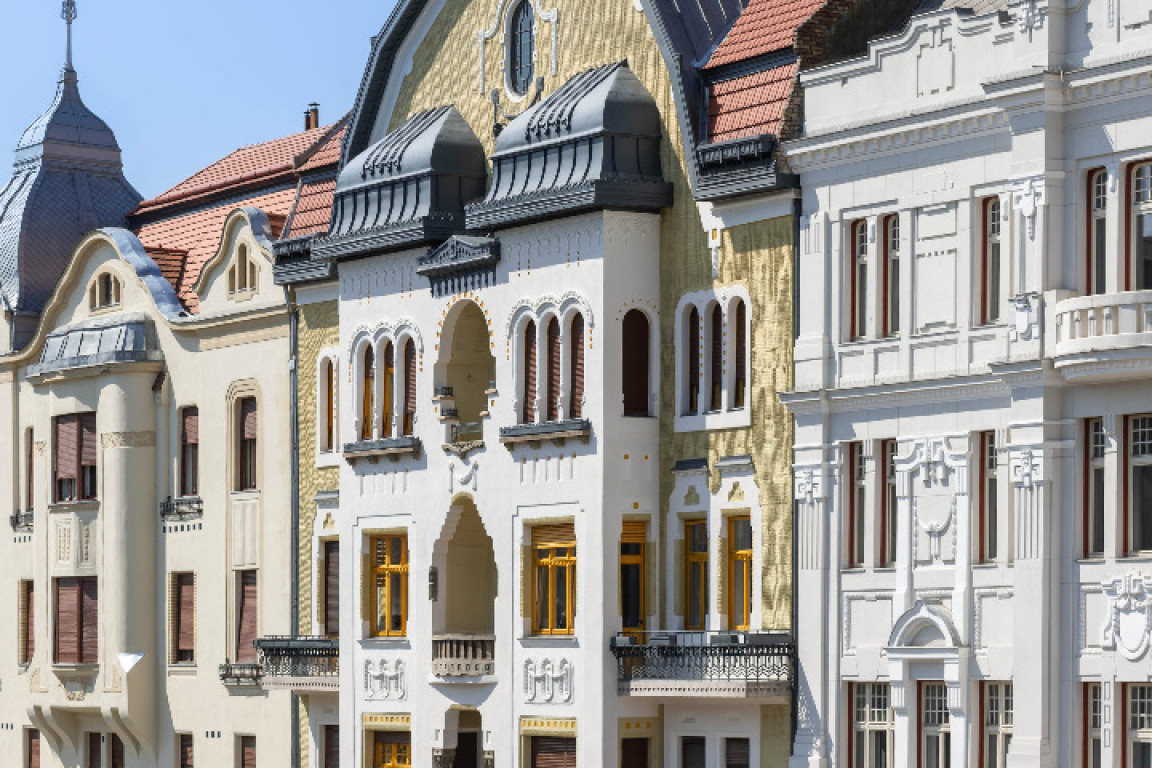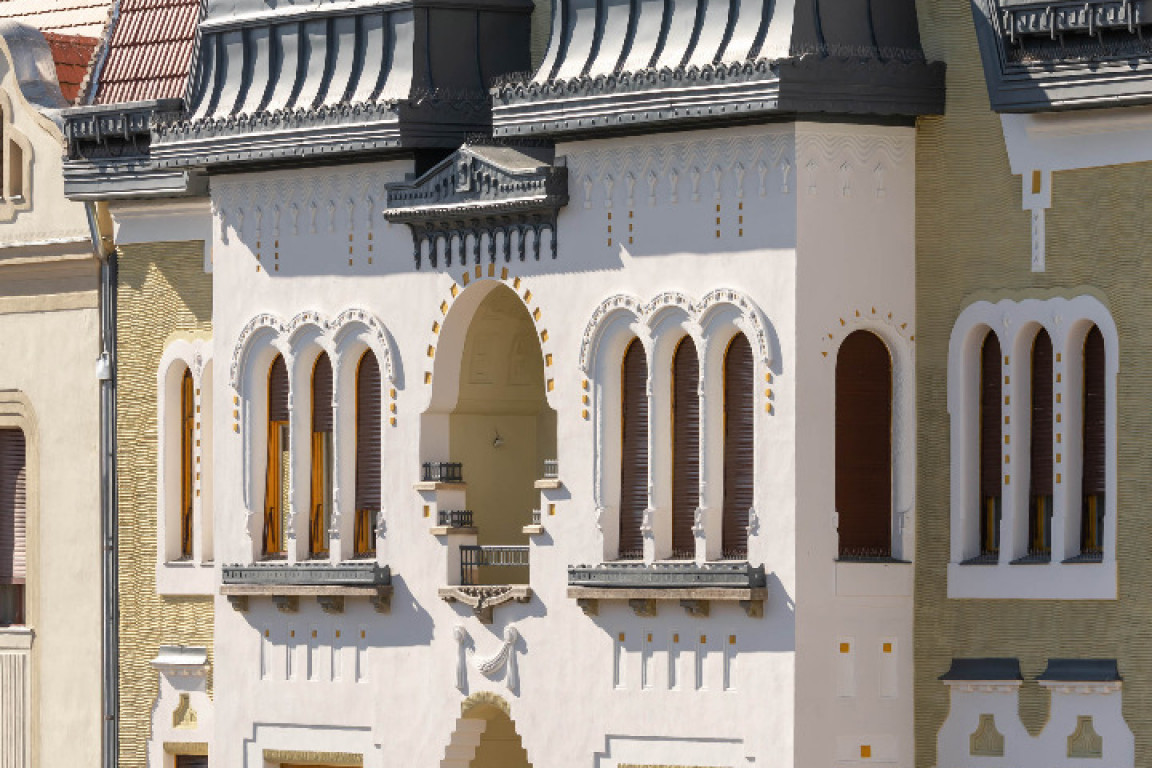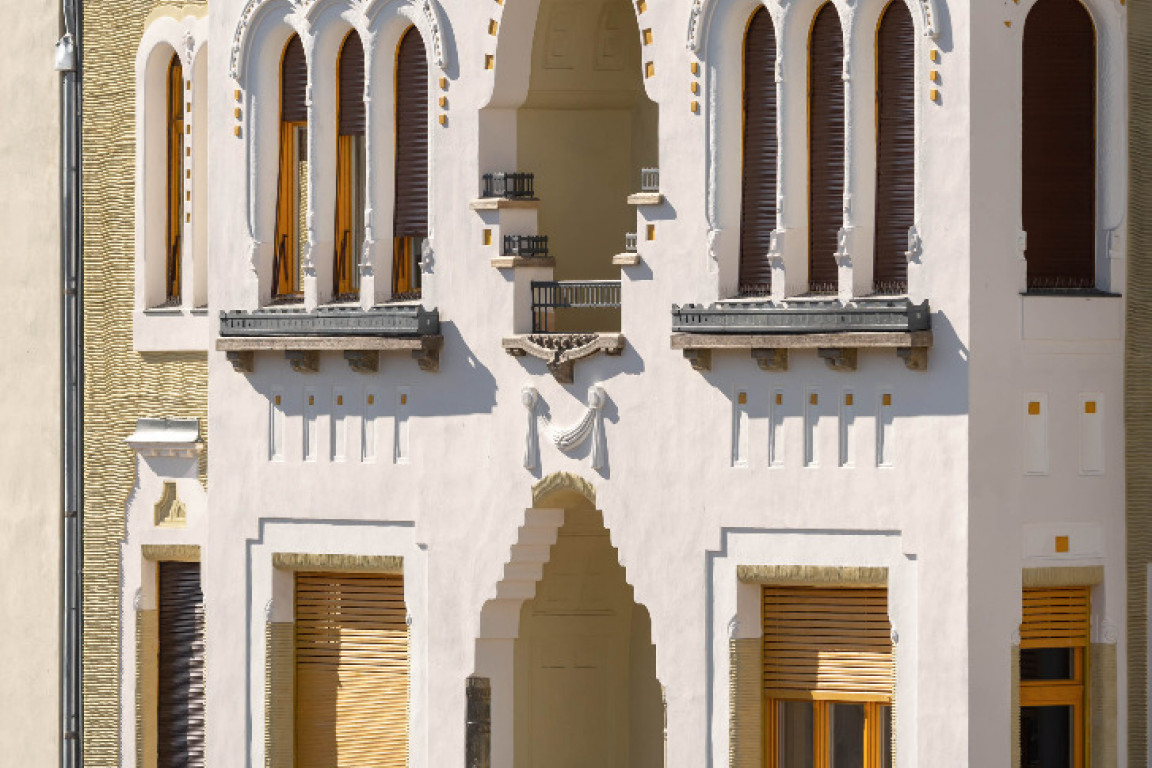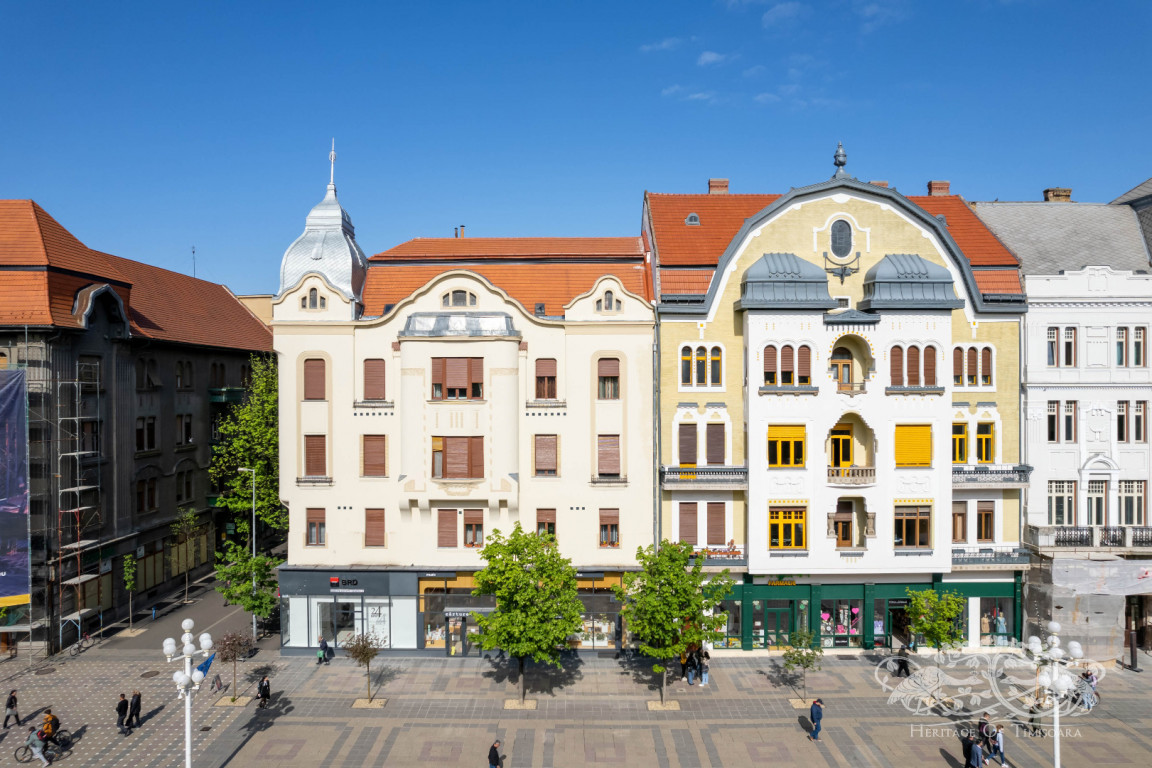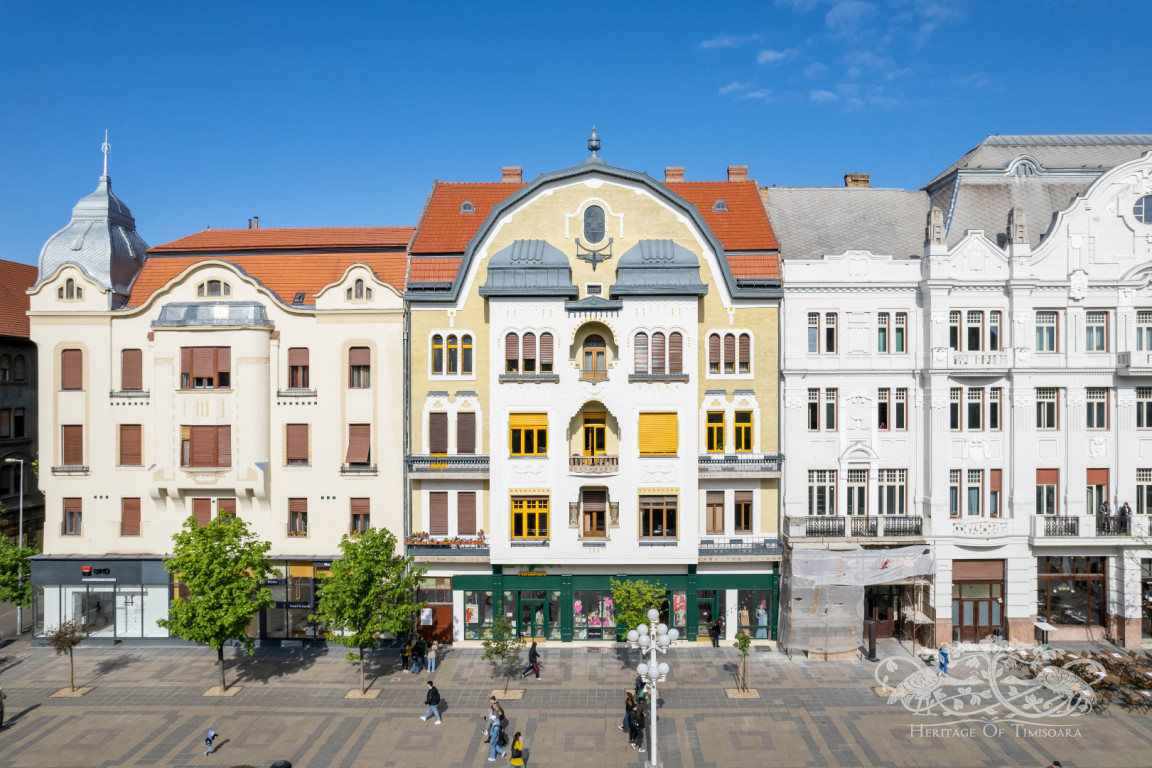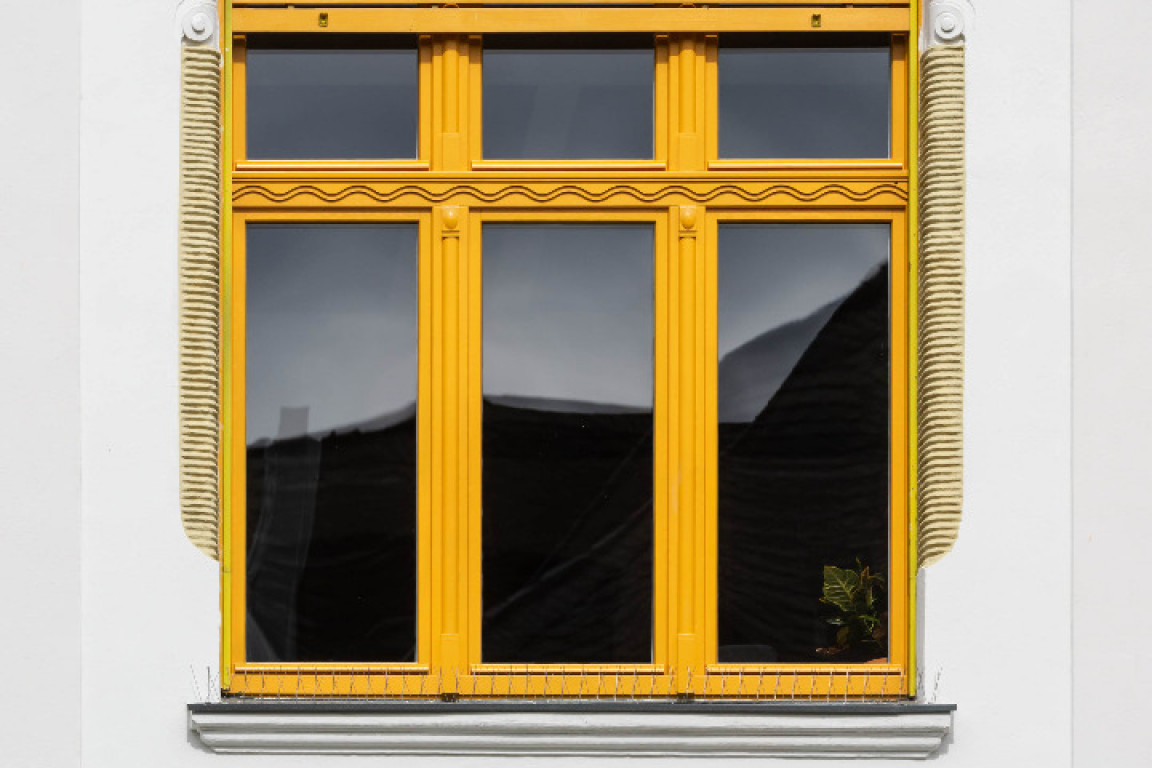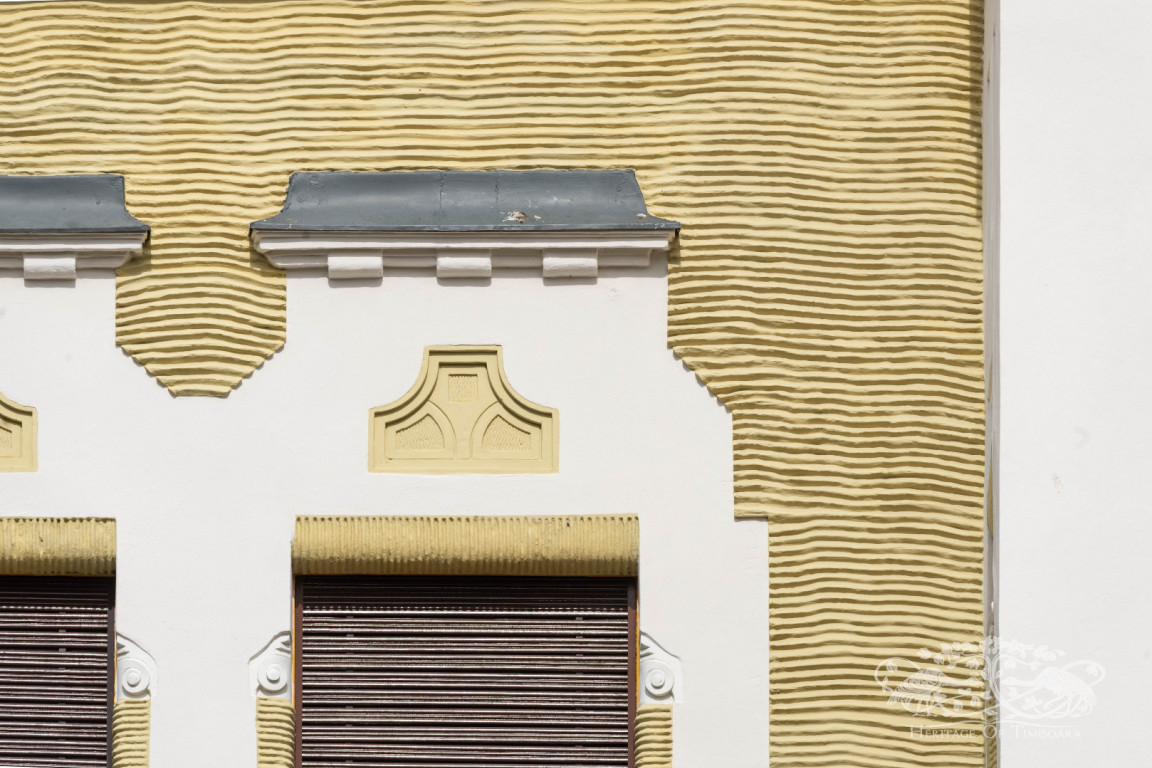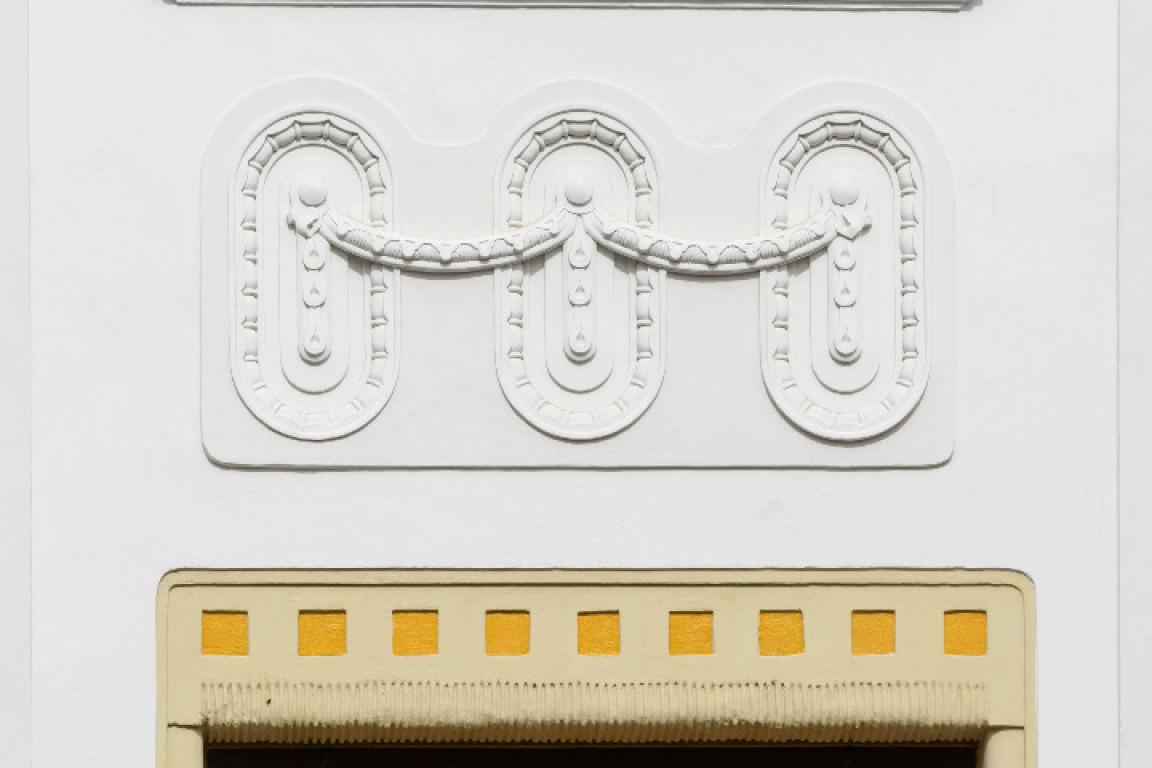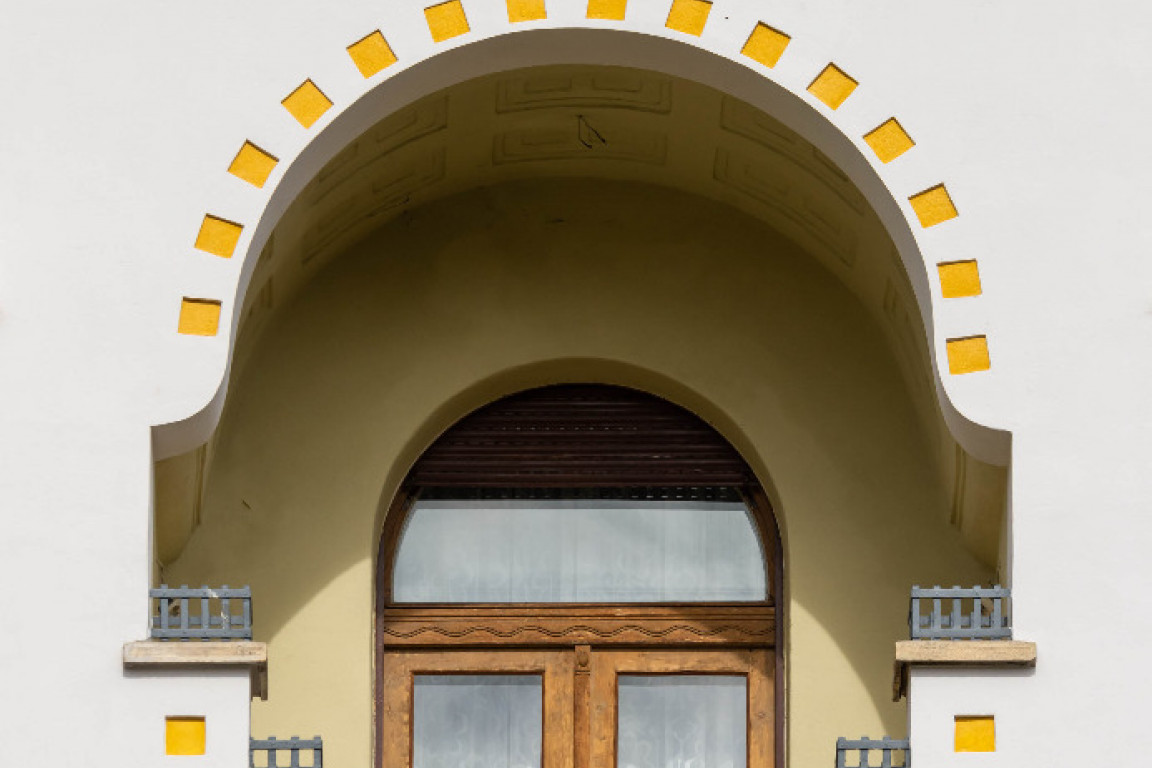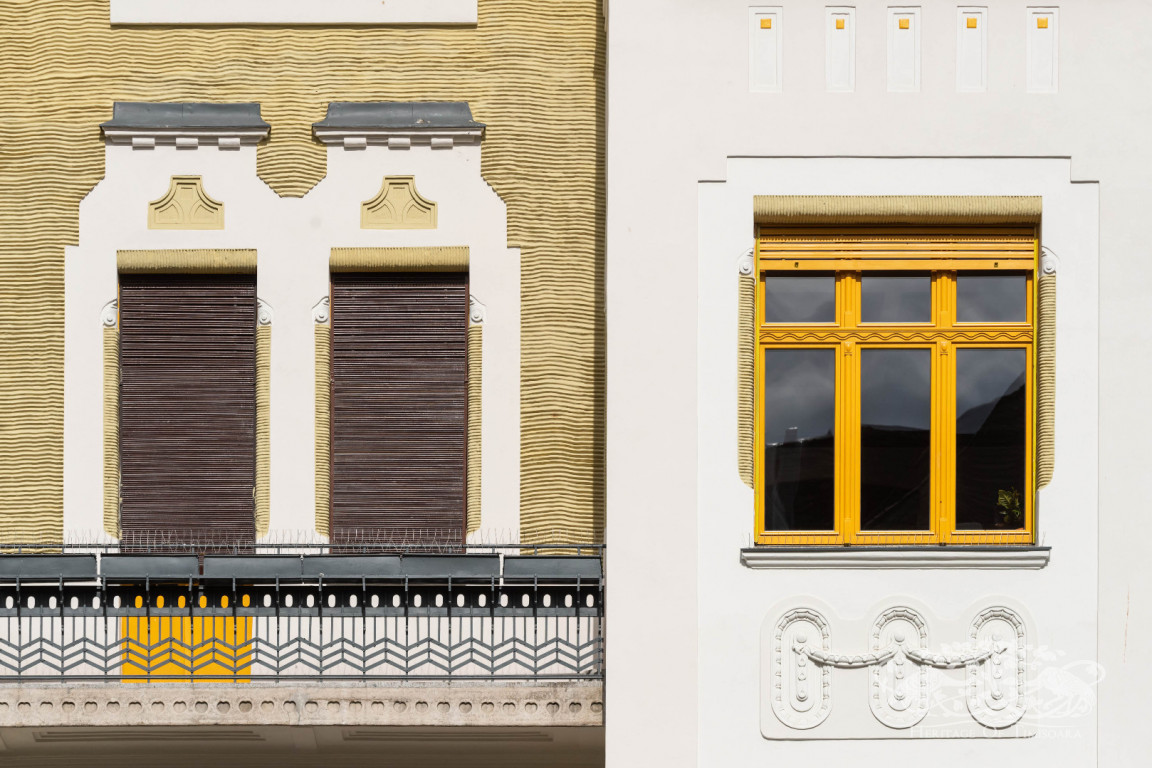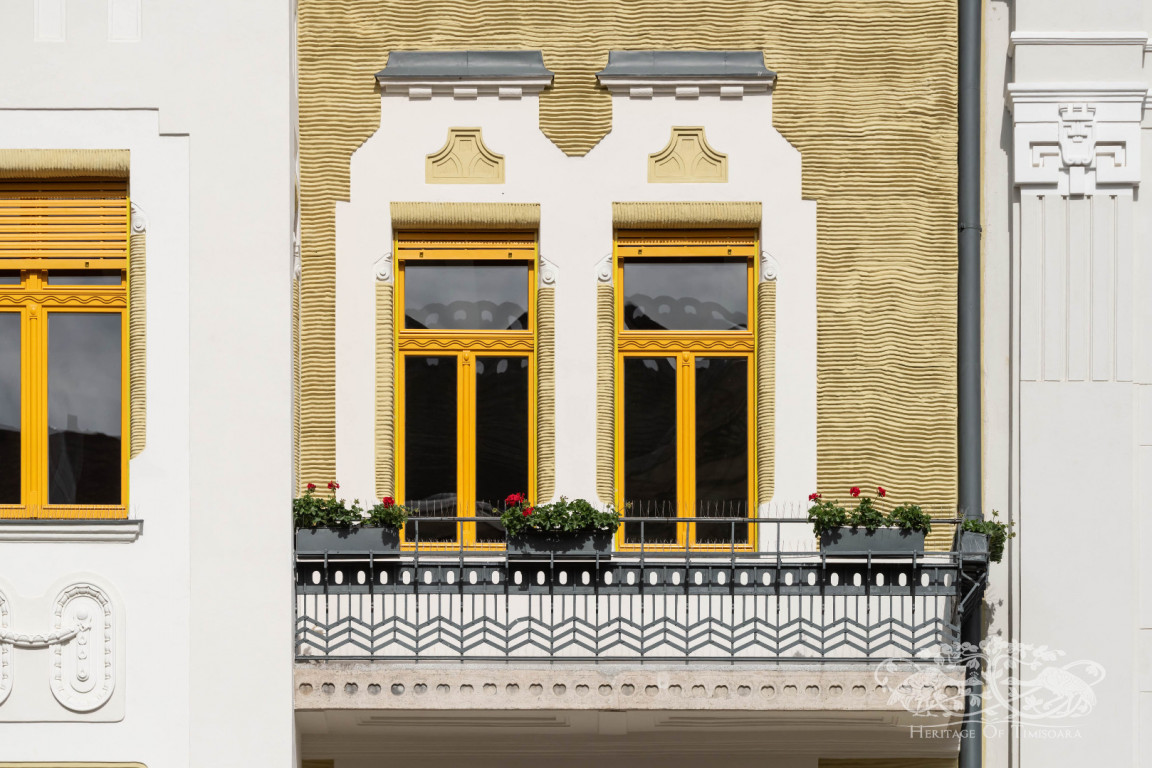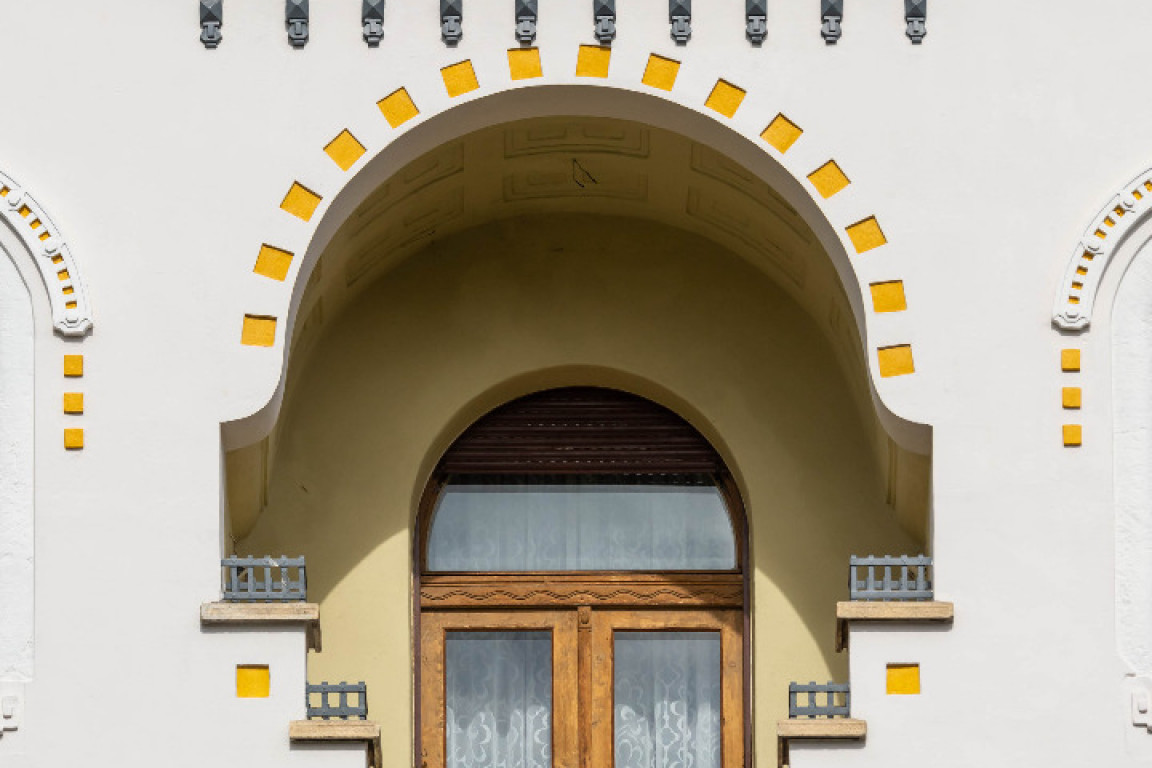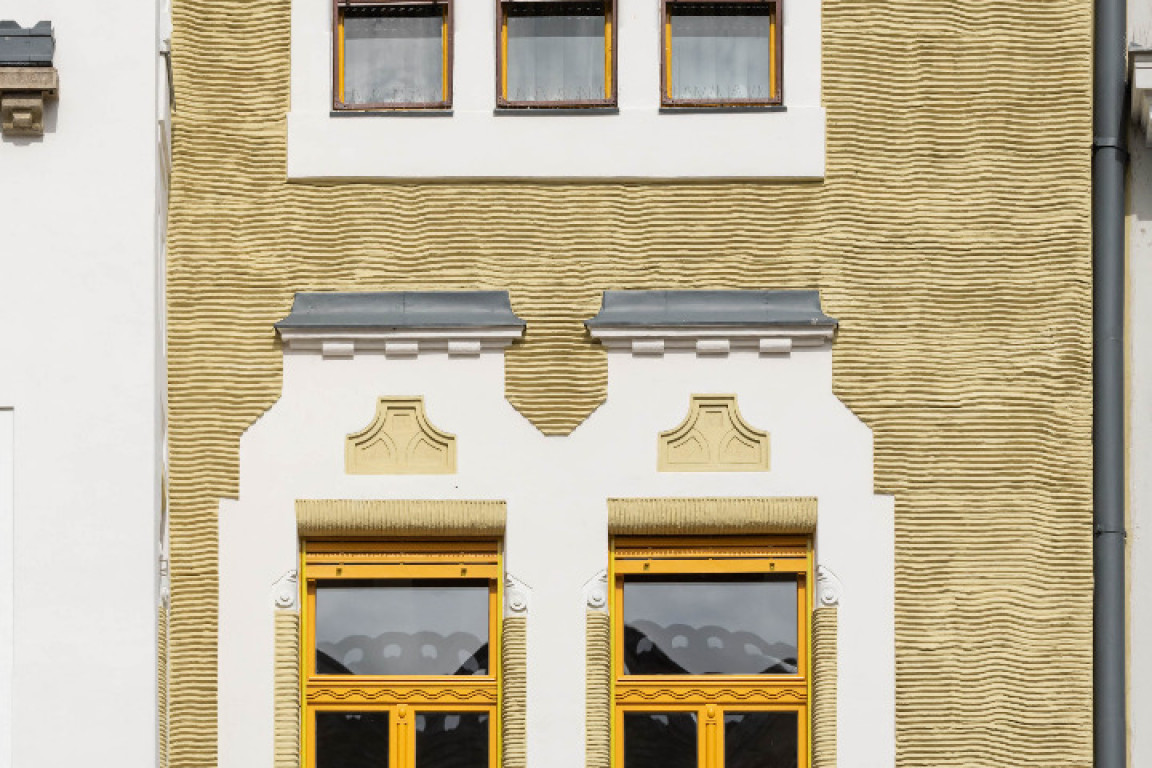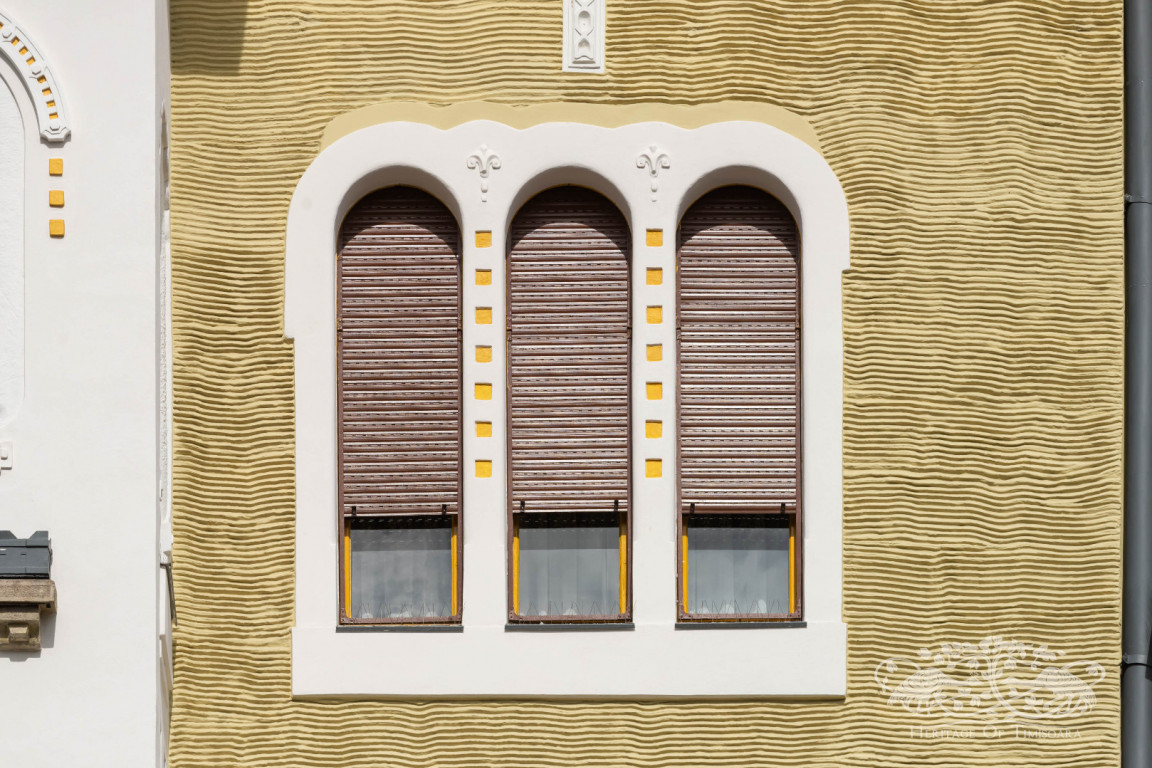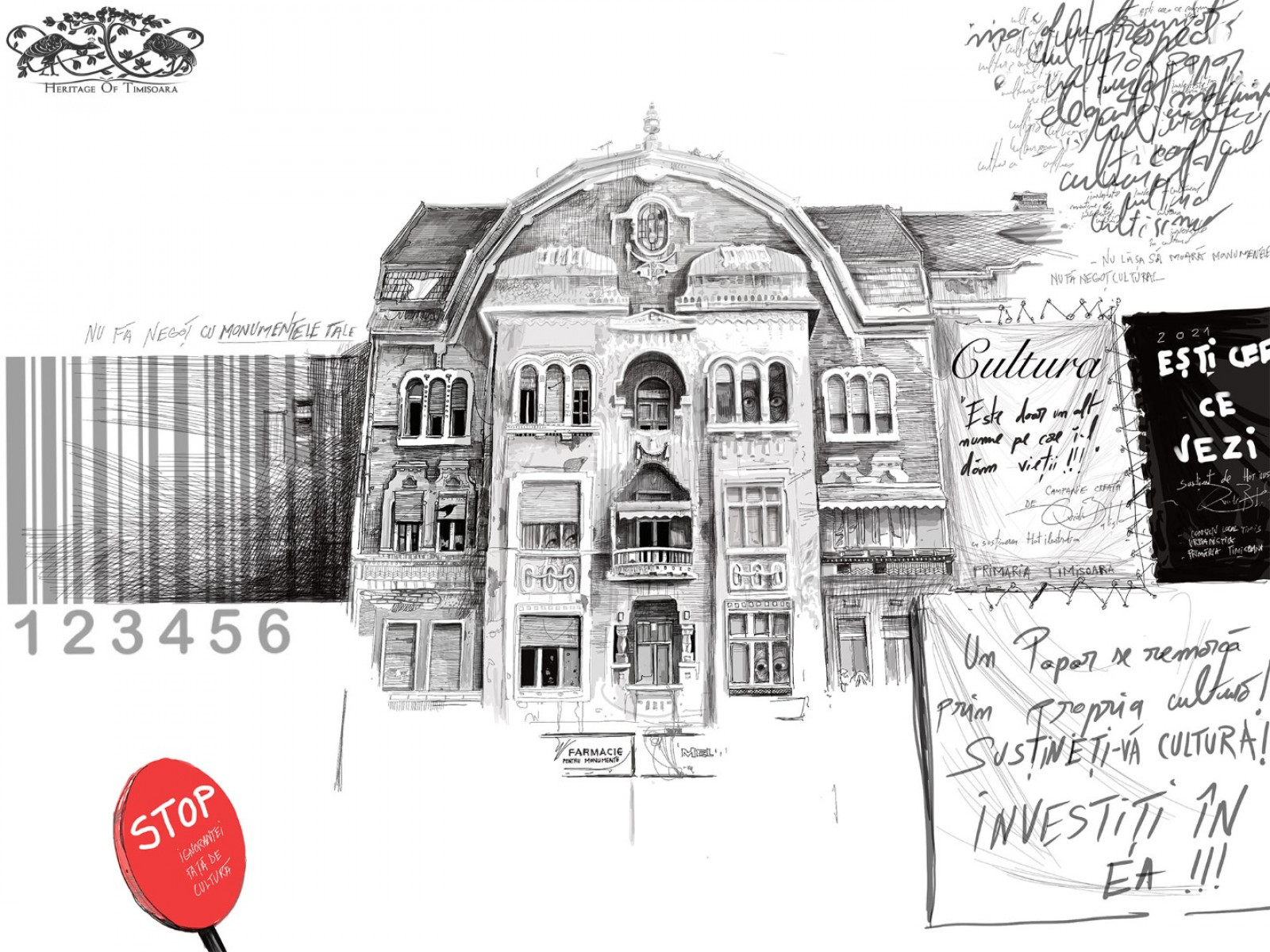The story of the building begins in 1910, when Ernő Neuhausz purchased the plot of 221.6 square fathoms (or square klafters in German) for 82,000 Austro-Hungarian kronen, paying 370.04 kronen per square fathom. In the autumn of the same year, he obtained the building permit for a four-storey building, and at the end of 1911 he also obtained the permit for the installation of an elevator. For the project, he enlisted the services of the city's head architect at the time, László Székely. The project presents the main characteristics of the Secession style popular in Timișoara at the time, in particular dynamic volumes that stand out from the plane of the facade, represented by the two three-storey high bay windows, joined by loggias at each level and included, at the upper level, in a monumental polygonal pediment made of 8 segments. Each loggia is treated differently by using elements of classical architectural vocabulary, but reinterpreted in a Secession style and mostly executed in a semblance of stone. The ironwork and paintwork are also of great refinement: the flower boxes, the flag-holder, the cornice ornaments. The building is also remarkable for its plasterwork, displaying large surfaces of “combed” plasterwork, together with carefully crafted details and subtle arrangements of geometric decoration. As for the interior, the building’s dry access
gangway shows no trace of either ornament or decorative painting, but the stairwell still draws attention with its historic lift and geometric details on the underside of the stairs. Unfortunately, the palace has lost its historic shop windows at the ground floor level, displaying for a long time an unsuitable image to passers-by. Recently, however, the windows have been partially restored as part of the restoration project in 2022.
Ernő Neuhausz was born on 26 June 1874. He made a name for himself in Timișoar since an early age, first as Editor of the sports bulletin Velocitas Sportközlöny (between 1895 and 1897), then as Editor of the newspaper Delvideki Sport (between 1898 and 1903). In 1903 he also took over as Editor of the periodical Temesvári Színpad, together with Osztie Andor. He was also involved in editing the theatre magazine Magyar Művészet (between 1898 and 1905) and served as Editor of the chess newspaper Magyar Sakk-újság.
Halfway through the first decade of the 20th century, Ernő also became actively involved in Timișoara’s real estate market, bidding for and purchasing new plots of land that had appeared near the former pig market (today’s Plevnei Square), where he erected two two-storey buildings between 1905 and 1907. He lived in the one on Gheorghe Doja Street, and the access gangway still preserves a mosaic with his initials. But his career as a building contractor reached a climax with the construction, between 1910 and 1911, of the building in Victoriei Square.
During the interwar period the building was known to the people of Timișoara as the Färber Building, having been purchased in 1917 by the famous family of factory owners from Timișoara. They founded the United Varnish and Paint Factory, renamed Azur after the 1948 nationalization.
